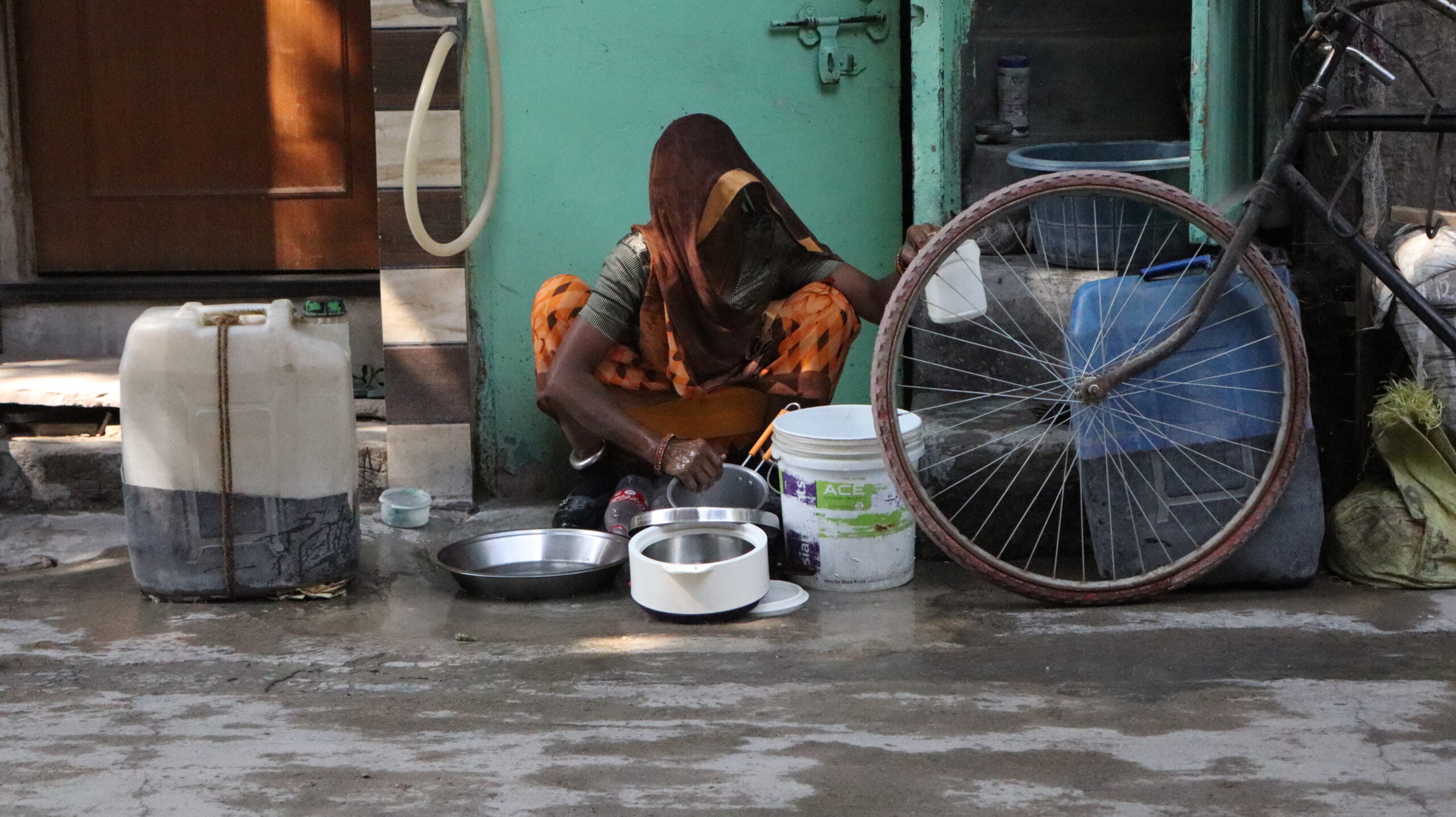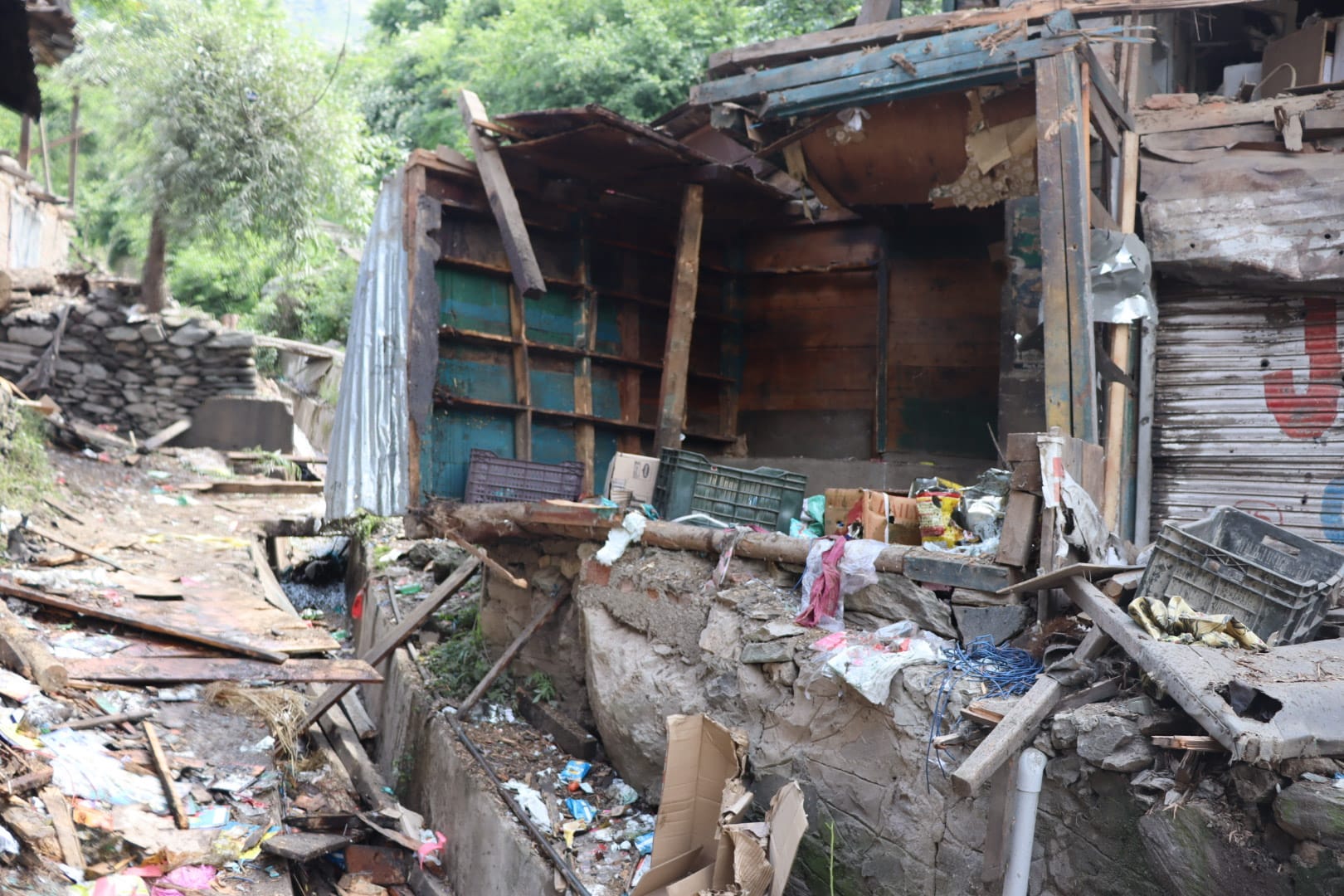Vasant Vihar is a well-known and relatively affluent place located in the heart of South Delhi and just beside that lies Kusumpur Pahadi, the largest slum in Delhi. The stark contrast of these two places is visible the second one steps out of the Vasant Vihar metro station. While, the road ahead leads to the mall complex of Vasant Vihar, a 10-minute walk through another road uphill dotted by the buildings of the Embassy of Sudan and Mizoram Govt. Place leads to the Kusumpur Pahadi. Kusumpur lies in an elevated land and since is called “Pahadi” – experiences a disastrous problem of water crisis.
Kusumpur which lies behind the glitz and glamour of South Delhi has never had a running water source for over 40 years. Boreing and groundwater taps are the only two sources however due to pipelines needing to be fixed the residents are dependent on water tankers daily.
Kusumpur is divided into blocks from A to E spanned across the Pahadi to the Aravalli Biodiversity Park. The facade of polished malls and buildings hides another Delhi, a Delhi hidden and often literally done so by the state.
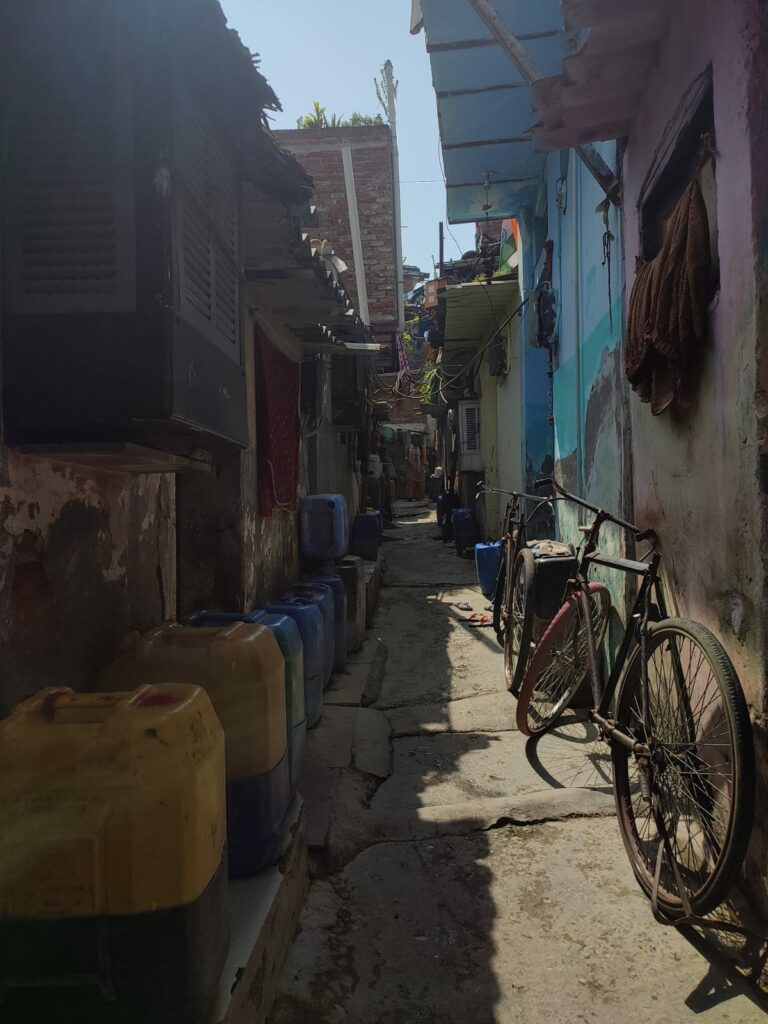
Blue is the colour that stands out as the walk continues through the streets of Kusumpur. Bluewater cans line the alleys of the place and if chances are that you visited Kusumpur during the early hours of 9 to 11 am, you will find people hustling and rushing, the roads wet and muddy from the water tankers that come here every day to supply water to the residents.
The slum comprises people belonging from different parts of India- Rajasthan, West Bengal, Uttar Pradesh and Bihar. Migrants make up the majority of the population.

‘Sabse badi naukri paani ki hai,’ says Buddhi Devi, a resident of Kusumpur’s Block E.
Filling water is a daily task for the womenfolk of Kusumpur.
Tankers of Delhi Jal Board arrive by 10 am. Women spend their entire morning waiting with 40 litres cans to fill water for their daily necessities which is so easily availed just 10 mins away in the Vasant Vihar.
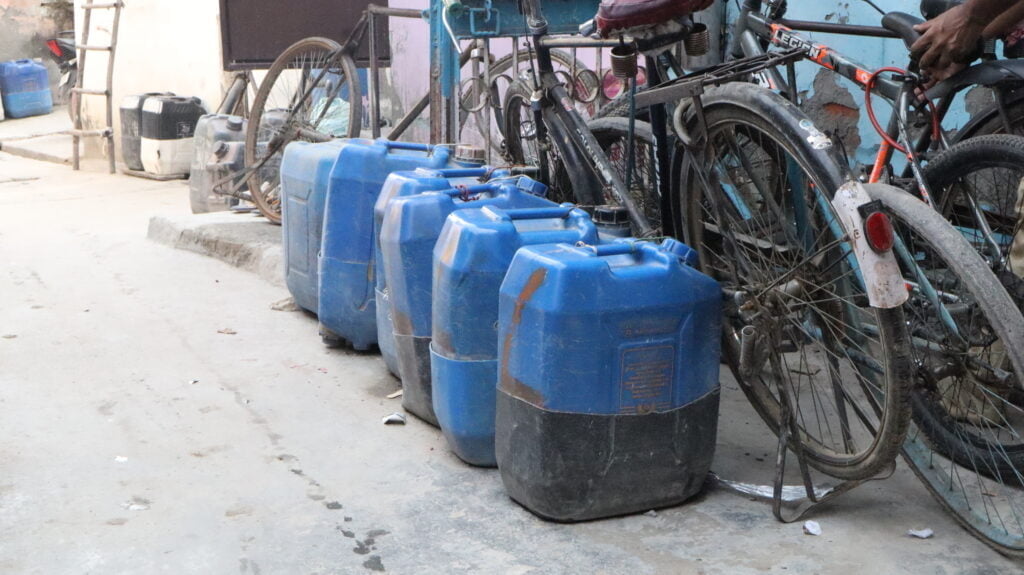
Geeta Devi, a resident of Kusumpur’s Block A narrated a regular morning for her to us. She wakes up by 7 am, prepares food for her family, sends her children off to school and does household chores such as cooking, bathing, washing clothes and taking care of her family she has to run around with cans to fill water for her regular use.

Women use cycles to carry these 40-litre water cans to their homes. Carrying such heavyweights causes them severe physical pain and arthritis. They can be seen carrying 2-3 water cans on cycles. This water is then used for all sorts of activities from drinking water to household chores and bathing. The water is often consumed unfiltered.
Suneeta and Geeta Devi are two residents of the E block. Both of whom manage a local shop selling clothes. Along with raising their kids, taking care of their family, and daily tiling for water, they run a business of sewing and selling clothes.
‘Sometimes there are animal faeces, dead mice and other dirt in the tanker. We can’t even throw this water since we have no option but to use it,’ Geeta Devi and Asha Berwa, women of Kusumpur express.
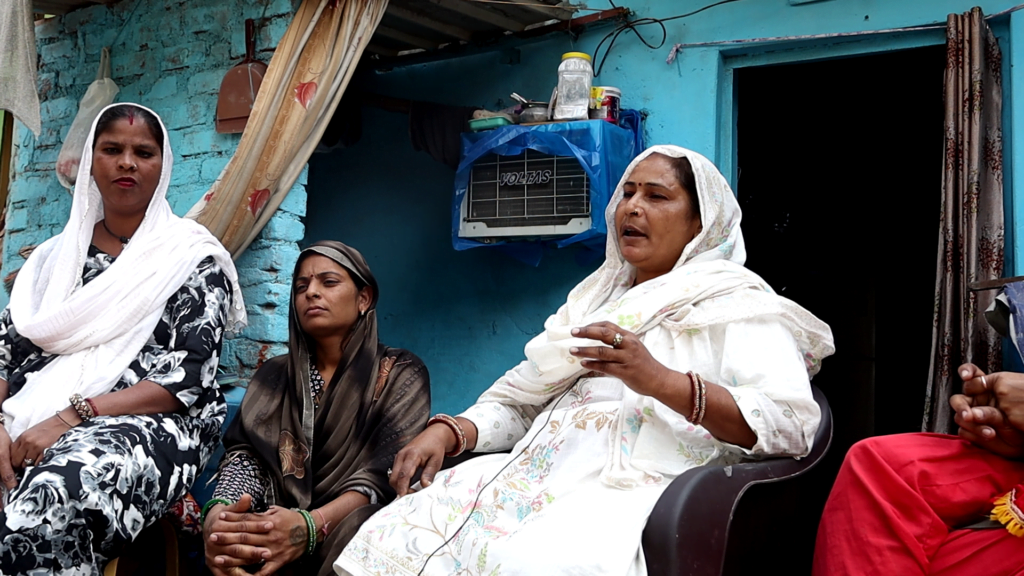
‘Kya hoga video leke?
Video leke chale jate hai.’
The locals said as they were filling water from the tanker for the day.
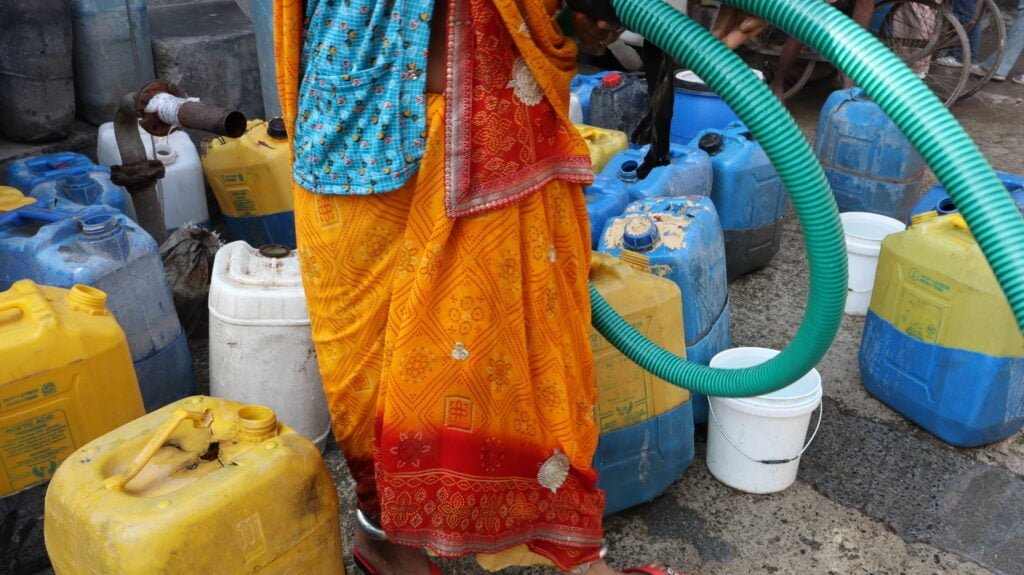
The position of the blocks in the pahadi also decides the frequency of water tankers. Tankers visit the A block which is closest to the Chinmaya school and nearest to the metro almost regularly.
However, the residents of the E block (situated at the end of the Pahadi) complain that there are often days when tankers do not come at all without any notice. Even on the same day when tankers come to the nearer blocks, residents of the E block are left tirelessly waiting to fill water due to the irregularity of tankers.
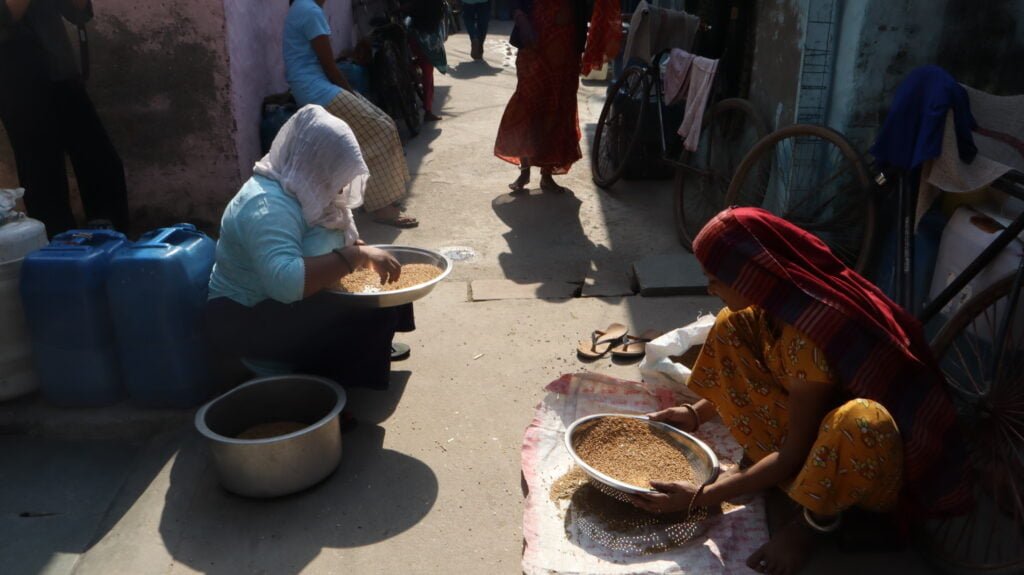
Taken during the rush hour of water filling. A woman helping a young girl (Sakshi) lift her cycle to carry her water can home.
‘Sakshi rukja kaise le jaygi
Strong ladki hai Sakshi.’
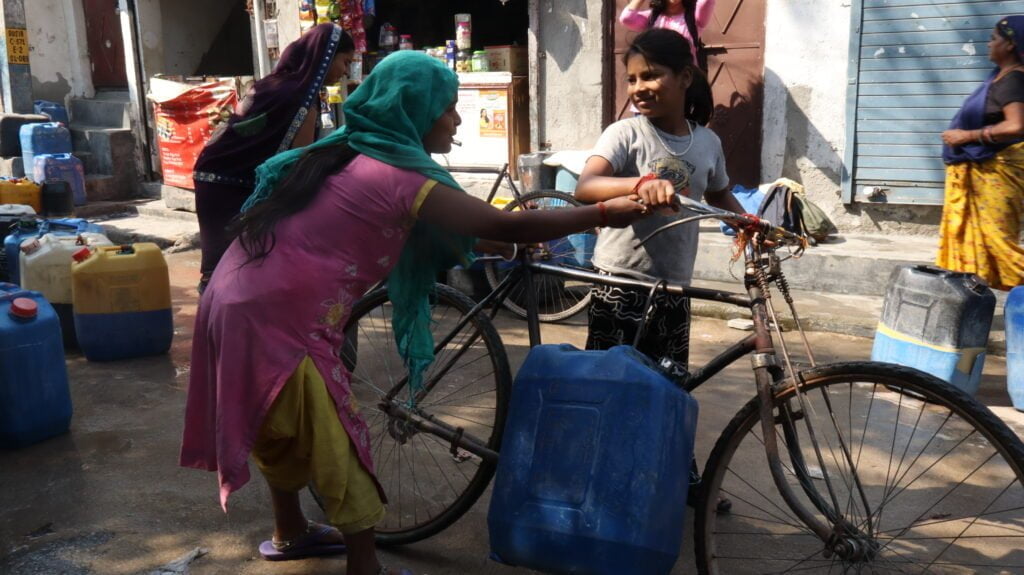
The children and the women bear the consequences of this daily struggle the most. It is usually young girls who help with the task of filling water. Due to this they also often miss school and are unable to fulfill the compulsory attendance quota which affects their studies.
Children as young as 8-10 years old carry the water cans.
In 2019, India was declared open defecation free. However, a closer look reveals how that is far from the truth. From block A to E, there is only one public toilet which has no taps and no water supply.
‘Shouchalya mein nalka hi nahi hai, paani hoga tab hi toh nalka lagega,’ says Kaali Devi, Kusumpur’s resident.

The caretaker who works in the public toilet 24/7 for extended hours expressed that he had been facing an issue of irregular salary.

A resident says ‘Governments come and go but hardly anything changes.’
During every election promises are made by these politicians to eradicate the water crisis. Whether it is AAP in power, or BJP hardly anything changes the experience of the people with water.
The tanker people often take bribes from people and even illegally sell water for higher prices. Some residents too resell water that they receive from tankers.

The water crisis in Kusumpur is not a simple geographical issue. It is deeply systematic the way this crisis persists. Local politicians and higher-ups continue to use this issue to get votes. The residents of Kusumpur are tired. They are tired of this constant vote bank politics and the politicians who only visit their houses to give false hopes of solving the water crisis during the time of elections.
Photos are clicked by Anuska Chatterjee
About the author(s)
As an independent journalist, writer, and aspiring documentary filmmaker, Stuti covers about social and political issues. Interested in development journalism she also highlights issues on human rights, gender, education, unemployment, law and others. She aims to start her own news media initiative in the future to transform the way development is covered and discussed in the news.
